The celebration of 81 years since Guam was liberated from Japanese occupation brought a mix of pride, sadness, and joy for the World War II survivors who served as the grand marshals for this year’s Liberation Day Parade.
Each of this year’s grand marshals was a child when U.S. forces recaptured the island on July 21, 1944.
Seated atop the grandstand at the head of the Liberation Day Parade route on Monday, they had a front row seat to the fanfare as some 70 different parade entrants motored down Route 1 or Marine Corps Drive.
Grand marshal Joaquin “Danny” Santos, 88, recalled attending church in his home village of Asan at 5 years old, when Japanese bombers headed for Sumai flew overhead.
“Our grandmother hugged us, pulled us and hugged us, and the priest blessed us,” Santos said.
He remembered a Limtiaco bus was loaded up with men from Asan and Piti to drive up to Yigo. The bus was ambushed by imperial Japanese forces on their way to take Hagåtña, and all but one man, Gregorio San Nicolas of Asan, was killed, Santos said.
Santos recalled taking food by bicycle to Hagåtña for his grandfather, a boatswain’s mate in charge of painting ships for the U.S. Navy, who was detained by Japanese forces for questioning.
After being let go by the Japanese, Santos said his grandfather and the rest of the family were made to march from Asan to the Manenggon concentration camp.
“My grandfather had a carabao cart, and on the carabao cart were the elderly, the sick, especially the sick and the little ones,” he said.
While at Manenggon, “one evening, my grandmother was crying and saying the Rosary and telling my uncle Gregorio Siguenza to please stand there so that she can have his imprint in her heart, because Gregorio was leaving the following morning,” Santos said.
Siguenza left for Yigo and was never seen again, but Santos said he believes his uncle may be one of the eight unidentified, beheaded bodies that were later found in Yigo.
After leaving Manenggon, Santos said he saw three Marines sitting on a vehicle, passing out food, “and my grandfather said, that’s a Jeep.”
He said the discipline of life during the war was something he took into the Marine Corps, where he eventually retired as a colonel and Vietnam War veteran.
“I represent, not only myself, my family, but also my wife (Rosalia Bamba Castro Santos, 86) who also is a World War II survivor, but also all the World War II survivors past and present, especially the ones that are still alive, that aren’t able to be here today,” Santos said.
‘I just start to tear up’
Julia Manly Villagomez, 87, of Sinajana, said she’s always been affected by watching U.S. Marines go marching in the Liberation Day Parade “because they were the first one that I saw.”
She was 6 when the Marines took the island from the Japanese.
“I remember them giving me a Hershey candy,” she said.
After the war, the only candy that children got were Butterfingers and Babe Ruths, Villagomez said.
“There’s something in me,” she said, about watching the Marines marching. “Especially if they play their band, I just start to tear (up).”
‘Dead people along the way’
Maria Concepcion Gayle, 88, and originally from Piti, said Liberation Day was always about freedom when she was growing up.
She was just 5 when the Japanese bombed Sumai.
“During the Japanese time, my mother and I used to walk from Aleguas, which is across Polaris Point, to Yona, because we have a ranch there,” she said, a trip they made every other week.
Gayle said her father had to move to Yoña because the Japanese military took their home in Piti.
Eventually, they were marched to the Manenggon concentration camp in Yona, and moved between there and the nearby Asinan camp.
Towards the end of the war, when the Marines were coming, her family was moved again.
“They moved us to Agat. So as we were passing by, there are lots of dead people along the way,” she said.
Gayle said she was “elated” to be a part of the 81st celebration of Liberation Day. It was the second parade she got to participate in—she was a 1957 candidate for the Liberation Day queen.
‘We survive with all the hardship that we have’
Grand marshal Teresita Sablan Aguon Guerrero, 89, of Mongmong, was 5 when the Japanese military invaded Guam. But the war survivor said she never got to watch the parade in person.
“It’s a very exciting time for me,” said Guerrero, who was happy for the chance to do her makeup and get dressed up.
Though family members would spend overnight at the parade route, the war survivor said she spent many years watching the event on T.V. while she took care of her elderly parents.
“The liberation, it’s a very, very happy one,” she said. “But it feels sad on me when you think of what you went through during the Japanese time.”
“My children...will never know what we went through, and we want them to see how hard, why we suffered so much. We have our love for our family and our country, that we survive with all the hardship that we have,” Guerrero said.
She hoped that by sharing the story of that suffering, the next generation would remember what was sacrificed, and hold on to the culture that Guam’s war survivors got from their own parents.

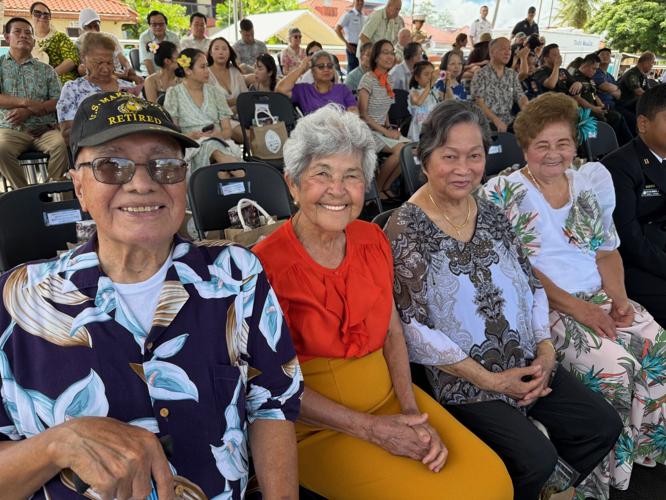
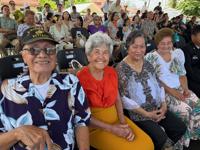
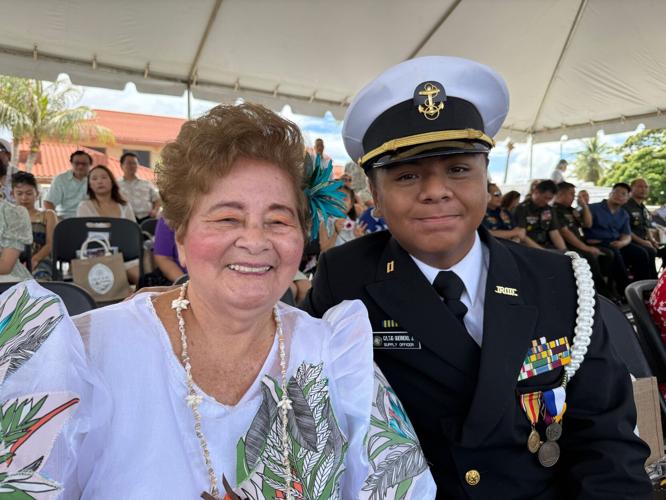
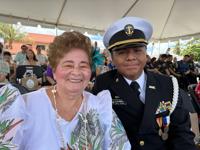

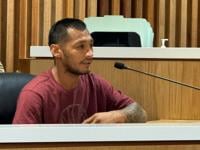

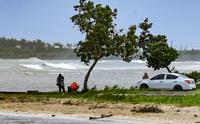

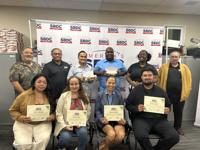



(0) comments
Welcome to the discussion.
Log In
Keep it Clean. Please avoid obscene, vulgar, lewd, racist or sexually-oriented language.
PLEASE TURN OFF YOUR CAPS LOCK.
Don't Threaten. Threats of harming another person will not be tolerated.
Be Truthful. Don't knowingly lie about anyone or anything.
Be Nice. No racism, sexism or any sort of -ism that is degrading to another person.
Be Proactive. Use the 'Report' link on each comment to let us know of abusive posts.
Share with Us. We'd love to hear eyewitness accounts, the history behind an article.